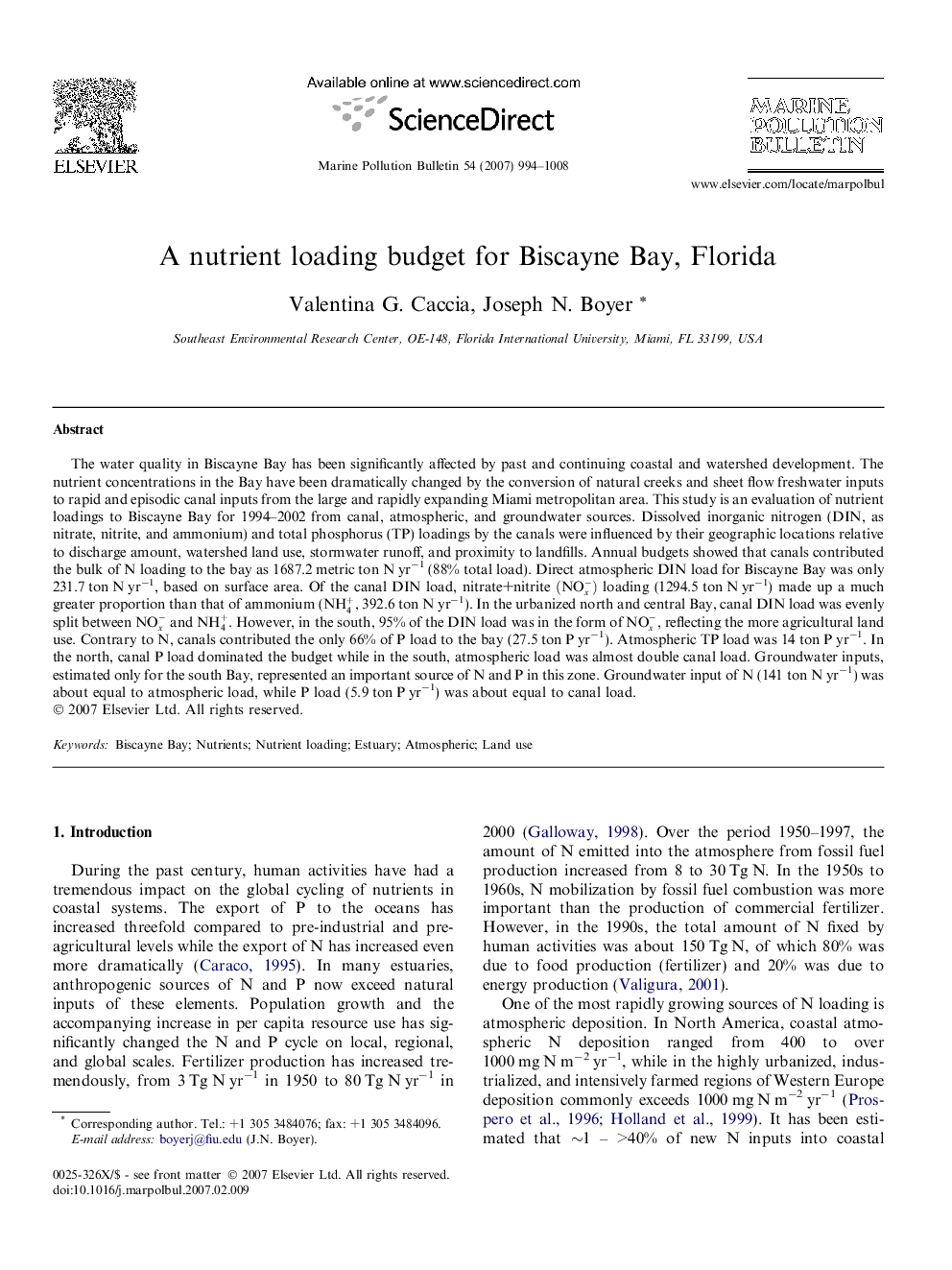| Article ID | Journal | Published Year | Pages | File Type |
|---|---|---|---|---|
| 4477444 | Marine Pollution Bulletin | 2007 | 15 Pages |
The water quality in Biscayne Bay has been significantly affected by past and continuing coastal and watershed development. The nutrient concentrations in the Bay have been dramatically changed by the conversion of natural creeks and sheet flow freshwater inputs to rapid and episodic canal inputs from the large and rapidly expanding Miami metropolitan area. This study is an evaluation of nutrient loadings to Biscayne Bay for 1994–2002 from canal, atmospheric, and groundwater sources. Dissolved inorganic nitrogen (DIN, as nitrate, nitrite, and ammonium) and total phosphorus (TP) loadings by the canals were influenced by their geographic locations relative to discharge amount, watershed land use, stormwater runoff, and proximity to landfills. Annual budgets showed that canals contributed the bulk of N loading to the bay as 1687.2 metric ton N yr−1 (88% total load). Direct atmospheric DIN load for Biscayne Bay was only 231.7 ton N yr−1, based on surface area. Of the canal DIN load, nitrate+nitrite (NOx-) loading (1294.5 ton N yr−1) made up a much greater proportion than that of ammonium (NH4+, 392.6 ton N yr−1). In the urbanized north and central Bay, canal DIN load was evenly split between NOx- and NH4+. However, in the south, 95% of the DIN load was in the form of NOx-, reflecting the more agricultural land use. Contrary to N, canals contributed the only 66% of P load to the bay (27.5 ton P yr−1). Atmospheric TP load was 14 ton P yr−1. In the north, canal P load dominated the budget while in the south, atmospheric load was almost double canal load. Groundwater inputs, estimated only for the south Bay, represented an important source of N and P in this zone. Groundwater input of N (141 ton N yr−1) was about equal to atmospheric load, while P load (5.9 ton P yr−1) was about equal to canal load.
